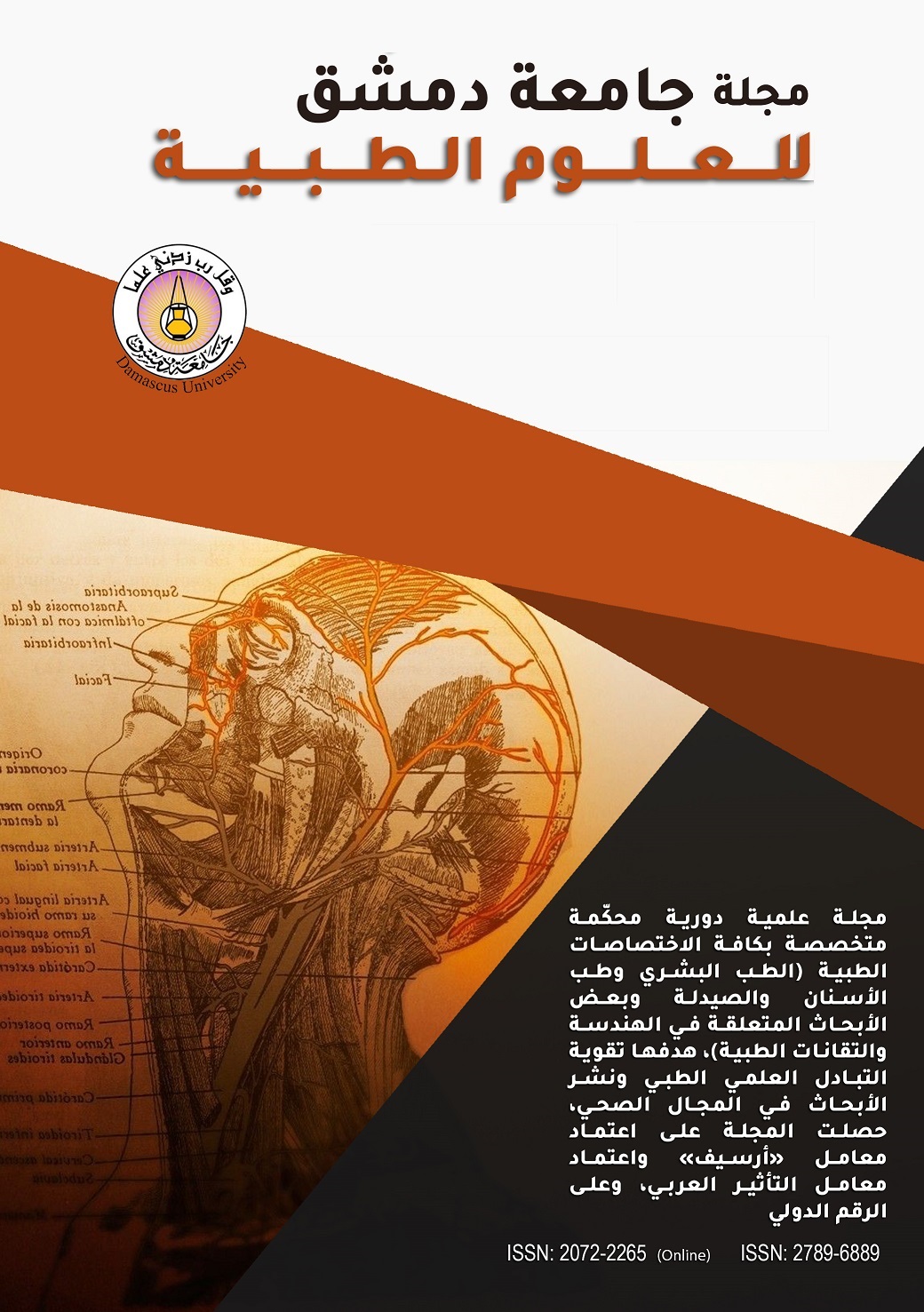Evaluation of cervical vertebrae Morphology in Patients with Class II division 2 Malocclusion
عيوب الالتحام
Keywords:
Class Ii Division2 Malocclusion, The Lateral Cephalogram, Cervical Vertebrae AnomaliesAbstract
Objective: This study aims to evaluate the morphology of cervical vertebrae in adults with Angle' class II division2 Malocclusion comparing with adults with Angle' class I occlusion.
Materials and methods: The sample consisted of 150 adults with age range (18-30) years with mean )23.8 + 3.86) years, sample consisted of two groups, the first one contains 75 adults with Angle's Class II division2 Malocclusion, skeletal class II relationship and horizontal growth pattern and skeletal deep bite, the second group contains 75 adults with Angle's Class I occlusion, skeletal class I relationship and normal growth pattern. The morphology of cervical vertebrae was evaluated on the lateral cephalograms which are taken before treatment by using Sandham 1986 analysis to evaluate cervical vertebrae anomalies (CVAs) which contain fusion anomalies and PAD (posterior arch deficiency). Chi- square test was made to compare between the variables assesd on the lateral cephalograms, also Spearman Correlation was made between cervical vertebrae anomalies and ANB angle, intermaxillary angle (B angle), U1-SN angle and overbite.
Results: The prevalence of fusion anomalies in class II division2
Malocclusion group is (44%), and The prevalence of PAD is (24%). The cervical vertebrae anomalies (CVAs) occurred significantly more often in the in Angle's Class II division2 Malocclusion, skeletal class II relationship and horizontal growth pattern and skeletal deep bite group comparing with Angle's Class I occlusion, skeletal class I relationship and normal growth pattern group (p <0.05). The correlation analysis showed significant relationship (p <0.05) between cervical vertebrae anomalies (CVAs) and ANB angle, intermaxillary angle (B angle), U1-SN angle and overbite, and the correlation is weak.
Conclusions: Fusion anomalies and PAD could be considered indictors to predict the incidence of Class II division2 Malocclusion, and also these anomalies are important for the diagnosis of these patients.

